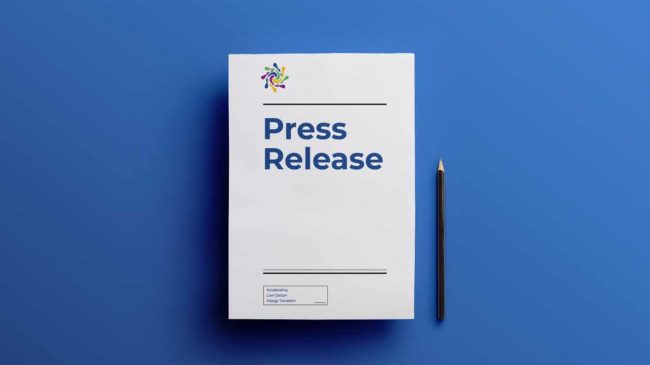Jakarta, 8 March 2023 – On 6 March 2023, the government established incentives for Battery-Based Electric Motorized Vehicles (KBLBB) in the form of assistance in purchasing KBLBB of IDR 7 million per unit for 200,000 units of new electric motorbikes and IDR 7 million per unit for conversion to electric motorbikes for 50,000 units petrol motorbike. Meanwhile, the exact amount of incentives for electric cars has not been determined, but the government plans to support purchasing 35,900 units of electric cars, and 138 electric buses. The government has also prepared an incentive mechanism that is only intended for manufacturers who have registered the type of electric vehicle that meets the 40% Local Content Requirement (LCR). This incentive is planned to be implemented from 20 March 2023 to 30 December 2023.
The Institute for Essential Services Reform (IESR) welcomes the provision of this incentive to encourage the adoption of electric vehicles and grow the domestic electric vehicle industry to encourage more sustainable economic growth in Indonesia and reduce the demand rate for fuel. However, to encourage more aggressive adoption of electric vehicles and ensure the effectiveness of incentives, some policy reforms are needed, including reducing fuel subsidies and a policy to phase out fuel-fueled vehicles, starting from passenger cars before 2045, and Internal Combustion Engine (ICE) motorcycles. IESR views that although the policy reform is not a populist policy, it needs to be taken by the government with deep consideration.
The use of electric vehicles is also a strategy to achieve the target of reducing greenhouse gas emissions stipulated in the Nationally Determined Contribution (NDC), with the target of adopting 13 million units of two-wheeled and three-wheeled electric vehicles and 2 million units of four-wheeled electric vehicles by 2030.
“Providing this incentive is a good first step to increase demand for electric vehicles. With the 40% LCR requirement, it can encourage investment in the manufacture and supply chain of electric vehicle components. It is hoped that with it, we can achieve economies of scale for electric vehicle production and encourage competition which can have an impact on reducing the price of electric vehicles to boost the adoption of even more electric vehicles,” said Fabby Tumiwa, Executive Director of IESR.
Fabby added that the conversion incentives to electric motors were expected to build the capacity of conversion technicians and workshops, as well as attract business actors to pursue a larger-scale conversion process.
“IESR found that there will be 6 million units of conventional motors per year that can be converted to electric motors by 2030. For this reason, hundreds of certified conversion workshops and skilled technicians are needed. Supply chain support for batteries, electric motors and other components is necessary so that conversion costs are more affordable for the public,” explained Fabby.
Moreover, to the LCR requirements for electric vehicle manufacturers, IESR suggested that the government could add electric vehicle performance requirements in providing incentives next year.
“The government can add additional requirements related to electric vehicle performance to encourage increased reliability of electric vehicles, as well as, the research and development ecosystem of the electric vehicle industry in Indonesia. These standards include vehicle mileage, minimum battery capacity, and conversion efficiency,” said Faris. Adnan, IESR Researcher.
Furthermore, Faris added that another interesting thing about this electric vehicle incentive is the priority of giving incentives for Micro, Small, and Medium Enterprises (MSMEs), especially recipients of Small Business Credit (KUR) and Micro Business Productive Assistance (BPUM), including 450-900VA electricity customers. However, according to him, motorists who provide online transportation or logistics service providers also need to be set as a priority.
“Online motorbike transportation or logistics drivers need to be prioritized in providing this assistance because they have long distances to travel per day so that the economic benefits for users and the government will be greater. The amount of assistance offered also needs to be pushed higher than the current amount, which is above Rp. 7 million,” explained Faris.
He also highlighted the installed power capacity of priority prospective buyers. The electric motorbike battery charger itself requires up to 400W of power. This means that to charge the electric vehicle battery, there will be a lot of electronic equipment that cannot be used at the same time.
“This can be anticipated by providing additional power increases when priority buyers buy electric vehicles that receive government assistance,” said Faris.
IESR views the adoption of electric vehicles as a strategy to reach zero emissions if the charging source comes from renewable energy. Based on the IESR analysis in the 2023 Indonesia Electric Vehicle Outlook (IEVO) report, the emissions emitted by electric motorbikes and electric cars are 18% and 25% lower than by petrol motorbikes and cars. However, if the development of renewable energy only refers to the 2021-2030 PLN Business Plan, then the reduction in emissions from electric motorbikes and electric cars is projected to be insignificant, only around 6% and 8% in 2030.
“With several government commitments and support for energy transitions, such as the Just Energy Transition Partnership (JETP), this momentum can also be used to accelerate the transition to the electricity system by developing renewable energy and stopping coal-fired power plants earlier. The result is a lower network emission factor so that the benefits of electric vehicles for decarbonization are maximized,” explained Deon Arinaldo, Manager of the Energy Transformation Program, IESR.
Deon added that the IESR study even showed that with a combination of transportation electrification and accelerated development of renewable energy, Indonesia’s renewable energy mix could even exceed 34% of the RE mix target announced at JETP. ***

